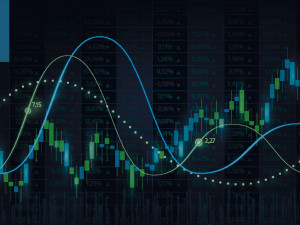
Activity trumps inflation, for now
Morning mid-market rates – The majors
24th June: Highlights
- Services Sector continues to grow rapidly
- Economic activity continues to grow across the board
- Italian banks finally act on bad loans
Services output, a little lower, but remains well above 60
Services output was a little lower than seen in May, but it was still well above the 60 level, and that means that the recovery is still in full flow.
The June flash estimate for services output was at 61.8. This is very positive given the 4:1 ratio of services output when compared to manufacturing.
There have been lingering concerns that employment issues in the services sector may catch up either this or next month, which could slow output. This hasn’t been the case so far but with the next time this data will be released, it will be following the first part of the withdrawal of furlough support, so we could see a dip.
The concern is that if there is a dip which the MPC fears could presage a slowdown, we could see a slower recovery but rising inflation.
That would mean that today’s MPC meeting may be the last for a while where Andrew Bailey gets a relatively smooth ride.
There are some tough questions looming, and Bailey will need to be well-prepared.
At his press conference later today, Bailey will be asked about the tapering of the current level of support but with the furlough genie being difficult to get back in the bottle, evasive comments will most probably be his chosen course.
On sidebar to the Bank’s meeting today will be a ruling they are set to approve that, Post Brexit, will make it harder for UK lenders to be taken over by EU banks.
The MPC is likely to look upon the surging oil price with a degree of concern, as it is a sure precursor of inflation. Even a large increase in OPEC supply is unlikely to dampen demand, which is growth exponentially.
Yesterday, the pound rallied, testing resistance at 1.4000 versus the dollar. It fell just short, closing at 1.3967.
Considering your next transfer? Log in to compare live quotes today.
New home prices will drive inflation higher
Jerome Powell, ably assisted by his Lieutenants from the Regional Feds, is working hard to convince the market that the rapid rise in inflation is transitory and that there are still concerns over the robustness of the recovery.
The high price of new home sales that reached record levels is finally having an effect on demand. While there is still ample stock available to sell, the prices home builders are expecting to receive is putting off potential buyers.
This is a sign that the recovery may slow as the autumn arrives and may see Powell proven to be right. This is a habit that he seems to have cultivated well.
Soaring raw material costs driven by shortages and supply bottlenecks may see a rapid decline in prices, which draws in buyers with a limited budget.
The FOMC is prepared to test the market’s patience over inflation, as it virtually confirmed at last week’s meeting that the sustainability of the recovery takes precedence.
Having signalled that rate hikes won’t be seen until 2023, Atlanta Fed President Raphael Bostic confirmed earlier that the initial idea of rising inflation lasting perhaps two or three months was a woeful under-estimation. It is more likely to last six to nine months, although the Fed’s inactivity is likely to remain.
To be fair, the Fed has been faced with several unique situations across the financial and political landscapes over the past year and has been necessarily reactive given the unpredictability of the situation.
The dollar is struggling to hang onto its Fed induced gains. So far, neither the pound nor euro have managed to break back above significant levels.
This has left the dollar fragile, but still attracting support. With the market having a fair idea of the Fed’s intentions, it may be either Bank of England or ECB actions that finally provide a bigger clue to the Greenback’s longer-term direction.
Yesterday, the dollar index fell to a low of 90.51, but recovered to close at 91.74.
Data unlikely to faze ECB
The issue, and where the Union has let itself down, Is the inability to sell goods within their own borders.
The level of imports from outside the bloc continues to increase. Brussels has to be very careful not to break trade regulations by seeming to impose incentives that ensure goods from outside being ignored in favour of locally sourced and manufactured products.
The EU needs to solve a seemingly impossible conundrum. How does it encourage consumers to buy more home-grown product, but ensure that the major manufacturers are still able to export?
Germany continues to recover fastest from the Pandemic. Staycations, where German tourists who normally populate Europe’s beaches stay at home, boosting the economy in a most unexpected manner, are the latest by-product of the Pandemic.
The other side of that same coin are the issues facing several countries, but Spain and Italy in particular. There are still hopes that the second half of the summer may be saved when Brits are released from lockdown, but the wealthier north of the Eurozone is unlikely to change its collective mind.
While Christine Lagarde believes that the EU and U.S. economies are in a different situation, she also believes that part of the rise in inflation in the region, which she also sees as transitory, is due to the level of stimulus being seen in America.
This then comes full circle, as Europeans still look overseas for a large proportion of their big-ticket purchases.
As mentioned recently, the dollar and euro are now inextricably linked.
Yesterday, the euro tried to test 1.2000 but fell short, reaching a high of 1.1970 and closing almost unchanged at 1.1932.

About Alan Hill
Alan has been involved in the FX market for more than 25 years and brings a wealth of experience to his content. His knowledge has been gained while trading through some of the most volatile periods of recent history. His commentary relies on an understanding of past events and how they will affect future market performance.”



